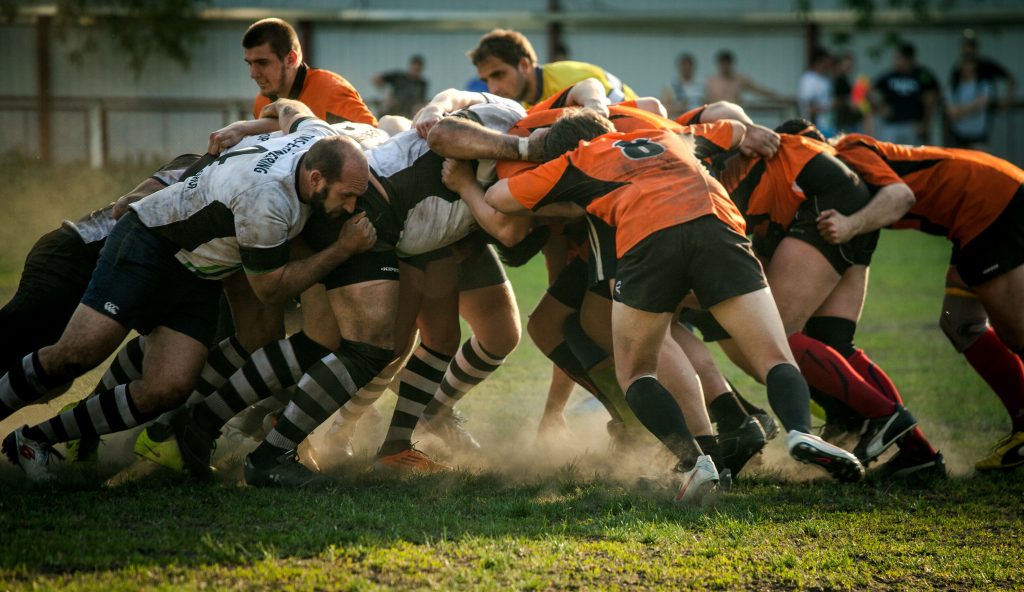How do you unify a bunch of random people to follow a common cause?
Quick answer: provide a common identity and, at best, a shared history.

Read on to discover how to form the team’s history and find stories at the workplace.
Let’s have a party
Everybody likes a party. And everybody feels afterward connected to other people who attended the party. Why? Because we perform activities together in a pleasant environment.
In his book “Influence” R. Cialdini describes how compliance techniques move people. Commitment is such a compliance technique. Commitments that are active, public, and effortful are the most successful.
A party is just that, active and public. However, it is not necessarily effortful (apart from the next day’s hangover).
Why group workshops can be destructive
Now let’s look at your last group workshop. Hopefully, it took place in a pleasant atmosphere. Sometimes the venue alone makes up for memory.
The three factors in detail:
- Activity: everybody was active. The organizer imposes the activeness, but this does not matter.
- Publicity: Most people were talking in public. Many techniques like feedback boards and break-out sessions are public commitment tools.
- Effort: last but not least, planning is hard work and effort.
But did you feel fulfilled and energized? I remember many planning sessions that left me bewildered, exhausted or both.
The principle of commitment can work against you. A hostile atmosphere from the onset and pressure leads to estranging of the team. Even though you might have initial success, later planning rounds might carry the burden of team internal conflicts. People will be there because they have to be. There will be endless discussions as no one wants to drop his stakes and align with a common cause.
So what’s missing?
The three silver bullets
Okay, everybody knows there is no silver bullet, but let’s try.
Start small
If you want to foster a feeling of belonging together, let everyone commit to low threshold goals. If these small goals are achieved, everybody will feel good at later planning meetings. The familiarity principle comes to play, and a “We always made a good plan work so far” can become the foundation for more challenging goals.
The coalition of the willing
Let’s face it. The workplace can sometimes be chaotic. Many people do what they want. Others do not have a clue what is going on. Finally, some give a *****.
Work-life features its social network. We all orientate ourselves towards each other. We all want to know what Harry is doing, how he is doing it, and who he knows. Team dynamics are governed mainly by the principle of social proof. It relies on
- group size
- familiarity
- and confusion
New projects launch with small teams, and everybody knows everybody. Team events occur naturally, which further bolsters the team spirit.
Now you know what you will do in your next greenfield project.
But what when your project is already in the taskforce hell? Many projects get on the slippery slope as they struggle to address uncertainty and limit task complexity correctly.
Focus on the willing people. Try to find similarities between people – their everyday problems. Assemble a coalition of the willing.
- Deal with any conflicting points.
- From this comes a group strength.
- And from strength comes momentum.
- And from momentum come the stories that push you forward.
- Stories and momentum attract more followers.
Confusion is a critical fact that keeps people from being engaged. Try to show an exact attitude and propose a direction.
Instant Gratification
Like and like attracts. The same applies to team creation. However, today diversity is king. That means your team has a diverse background. Diversity opposes familiarity, and if you let your group run wild, they will certainly discover their differences and hate each other.
Enter the “party factor.” Allow the group to get familiar with a calm atmosphere. The book “Peopleware” features a chapter called “A spaghetti dinner.” The team’s first task was to have a nice dinner.
Similarly, the luncheon technique connects the memory of a shared meal to a person’s face. We shared a good meal that filled our stomachs and made us feel good. We then identify the other person with this meal.
Sometimes organizing a dinner party is not possible. The key is not the dinner party but the shared experience. This piece of memory will serve as the seed of the group identification. The best experiences are experiences of shared victories. Group workshops try to employ this by letting a team build something or overcome an obstacle.
With your coalition of the willing, try to find the smallest possible thing that you can fix quickly.
